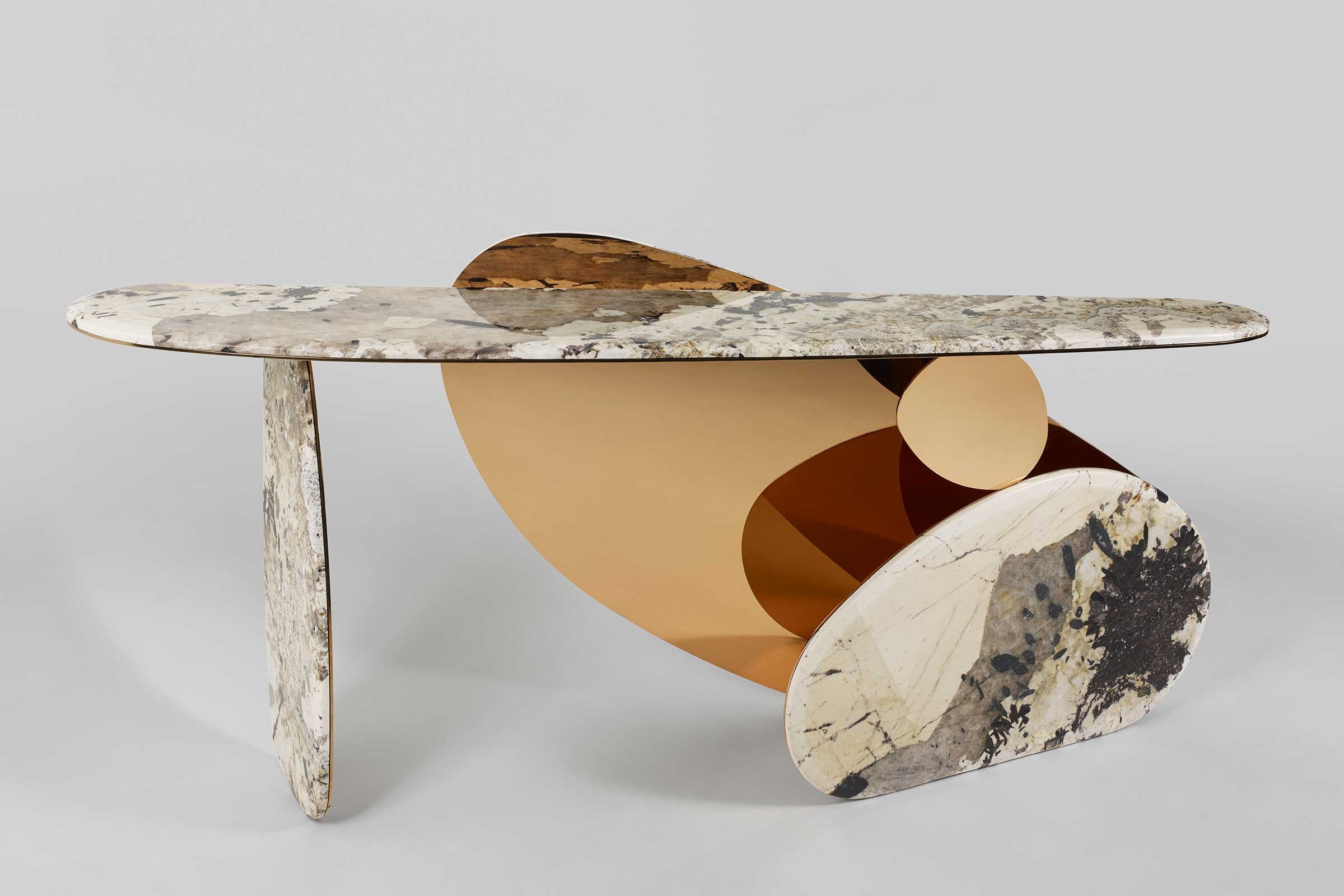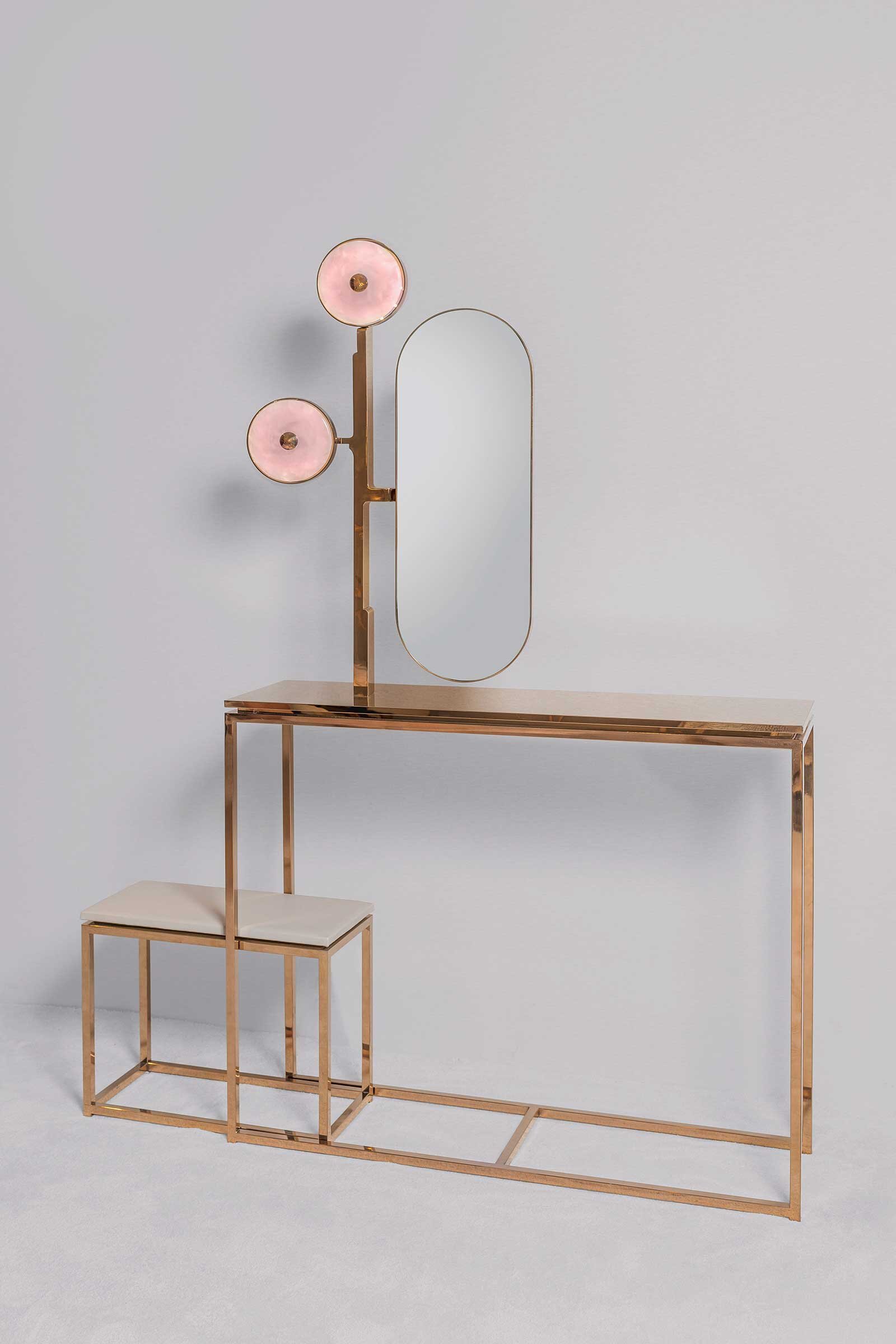Getting to Know Studio MVW

Chinese designer Xu Ming and French architect Virginie Moriette founded Studio MVW in 2006 in Shanghai. We spoke with the duo to find out more about their backgrounds, inspirations, processes and approach to interior design, architecture and limited-edition objets d'art and furniture
Design Anthology: You met in Paris while working for architect Paul Andreu; why did you decide to leave to start your own studio?
Xu Ming and Virginie Moriette: We first met while we were both working for Paul Andreu, but after Ming left to work for another agency he was invited to go and work in Shanghai. Both of us decided to leave Paris for Shanghai and once Virginie told Paul, he soon offered her an assignment in Shanghai too.
Can you tell us about how you started your studio and furniture collection?
When we were at international agencies, we worked on large scale projects but couldn’t actually use our creative minds fully. When we started designing furniture for our own home, we found the experience extremely exciting — small scale, palpable, visible. We could work on both functionality and materiality. Our friends found our furniture quite creative compared to what could be found in China at the time, which encouraged us.
We’d always wanted to set up our own studio. By showing potential clients our furniture creations, it was easier for to communicate our ideas and style than it was in previous projects where we’d work on massive projects for an agency.
What was the initial response to your work in China?
In our first year we were awarded a prize from Elle Decoration China for a piece we actually designed for ourselves: a set of floor-to-ceiling wooden bookshelves with curved forms that echo slender tree trunks, designed with the intention of bringing nature into our living space. We made three of them with slightly different designs; as architects we like to work with space and with this series of bookshelves our initial aim was to divide the space without creating any visual barriers.
Soon after, we opened a showroom where we displayed the shelves and a selection of other pieces. Almost immediately, our clients began to request interior design advice, and so we soon began to provide both architecture and design services. We still enjoy working on smaller-scale objects and furniture pieces, as well as larger projects within a creative framework.
How would you describe your creative process — how do you work together as partners and how do you divide the work?
Our cultures and backgrounds are different yet quite complementary. We’re both very conceptual and always brainstorm together during the conceptual design phase of a project.
To find the right solution, Ming draws a lot while Virginie is more of an analyst, two skills that complement each other quite well. Our initial direction may be different, but at the end we always share the same vision and aesthetic considerations. If we have arguments or disagree during the process, it’s obviously always in the interest of the project.
What inspirations inform your work?
Whatever the object or project, we draw inspiration from its context, the client’s needs and personality, and always from nature, with the objective of giving all projects a special identity with a hint of poetry.
We remain inspired by travelling, reading, and observing fashion and art movements. The fact that we work on different kind of projects —from objects to furniture and interiors — helps us stay creative.
Do have a preference between interior and product design?
Our work moves fluidly between different fields and different scales, from designing furniture to working on architectural projects for retail and hospitality clients. We really enjoy working on different scales and having to take scale into account when considering integration and harmony. Working on furniture also enables us to freely explore new aspects of design, and the material research and experimentation enriches our architectural work. Conversely, the work we do for our clients sometimes also inspires our furniture design.
Our fundamental objective is to create something unique for each client and project, and we do that by carefully listened to their requirements and understanding the brand or client DNA. The common denominator in our work is the quest for exclusivity, which can translate into various expressions, like a new way to use a material or to manage space, but always in a natural way — nothing should look contrived.
Are all of your pieces limited edition, and do you prefer to work that way?
A limited-edition piece represents freedom and creativity, where we experiment with what’s too-often neglected in the consumer goods industry. Products launched by a brand must, above all, be profitable, so that involves optimising costs and minimising risk. Most of the time, a simple restyling is considered more efficient and requires less investment.
Of course, there are still companies for which every product is a new adventure. We love working with Giorgetti, for instance, as the brand has such a long history, a wide variety of designs and an inspiring savoir faire.
The idea of limited series corresponds to our design vision of exclusivity, quality and a unique approach to shape, form and materials. So, in addition to our architecture and interior design projects, we like to create bespoke and limited-edition furniture and sculptural objects. Furniture allow us to experiment on a smaller scale; it’s a playground for exploration. It gives us space for experience and expression, and we find room to create elements of surprise.
The process is similar for our bigger projects: we play with volume, natural and artificial light, and try to create a meaningful environment and communicate a vision. To support this qualitative vision of design, we go beyond the functional aspects of a project and aim to reveal a second layer of meaning.
How do you select the materials you use in your designs?
The link to nature is perfectly clear in our furniture and interior projects, in terms of quality, timelessness, refinement and choice of precious materials like jade, marble, bronze and lacquer. We discover new materials by chance or appreciate commonly used materials and try to fit them into appropriate projects.
How has the design scene in Shanghai changed since you started out in 2006?
The design scene is changing very fast. The current contemporary style wasn’t in vogue 15 years ago. Nowadays, customers are looking for new ideas and objects or spaces with special characteristics.
In terms of interior design, we feel there are far more players in the field today; the Chinese design scene has really blossomed and is very active.
What would you say are the advantages to being based in Shanghai?
Shanghai's energy is what makes it one of the great cities to live and work in. It’s lively and full of contrasts and excess.
We appreciate the heritage art deco buildings in between the gigantic modern towers and traditional linong lanes, and that there are new and innovative voices, fairs and spaces for the art and fashion scenes.
Studio MVW is represented by several galleries that often exhibit your work at international fairs; which of them is your favourite to visit for inspiration?
Our pieces are regularly presented by Galerie BSL at PAD Paris and London, Nomad events and Salon Art + Design in New York, and we’ve collaborated with leading auction houses such as PIASA and Christie’s. Each has its own unique characteristics but all remain inspiring as they showcase an extensive collection of the best unique design pieces.
We tend to prefer art fairs over the larger design fairs, for their smaller scale, more intimate setting and the inspirational scenes they create or re-create.
Images / Courtesy of Studio MVW













